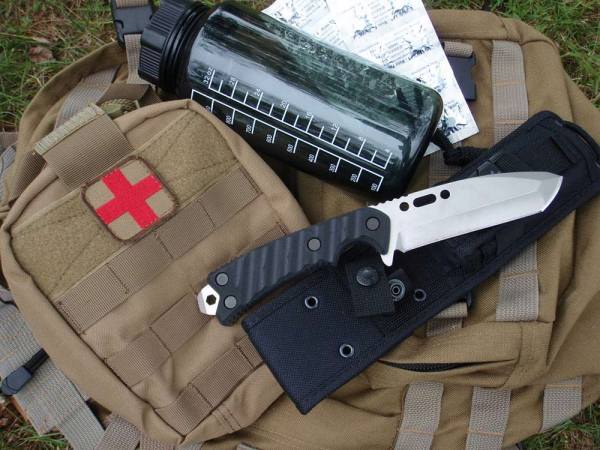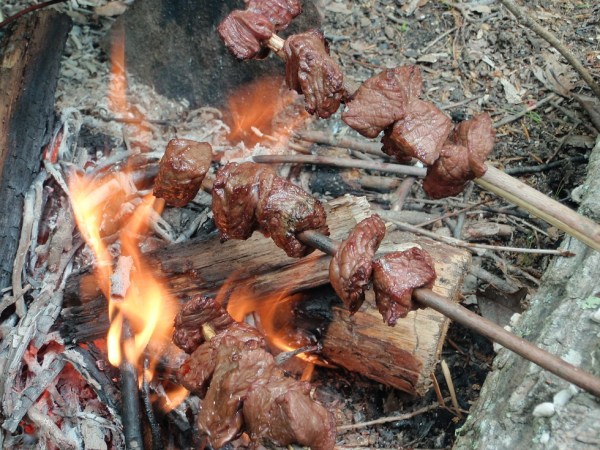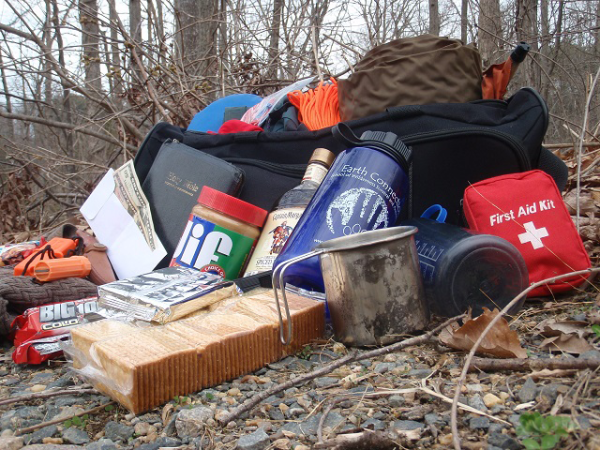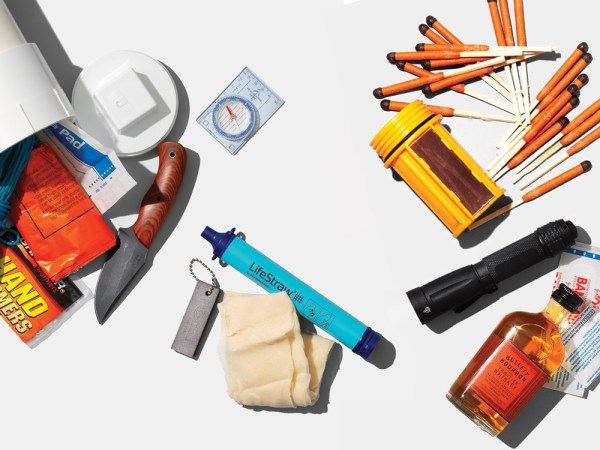We may earn revenue from the products available on this page and participate in affiliate programs. Learn More ›
As an outdoor and survival enthusiast, I really enjoy cooking over an open campfire. And I’m sure that I’m not alone in my enjoyment. There’s just something about it that seems to make the food taste better (besides the generous dose of smoke flavor). But it’s not always practical or even possible to build a proper cook fire in every situation. This is where stoves come in handy. Today, we have many different choices of stove that we can use to boil water and cook food. If you haven’t invested in one yet, here are some of the details on each kind to better prepare you for your shopping trip.
1. Solid Fuel Stoves
This group of stoves includes cans, stands, and folding boxes that burn a compressed fuel cubes or woody materials. Solid fuel burners are usually cheap, and somewhat effective, but you can’t turn them “off” like other stoves. The most sophisticated one in the bunch will burn sticks or other biomass, and charge your mobile while it cooks your meal (yes, fire can make electricity!). The cheap members of this group are pretty good for budget bug-out bags and vehicle emergency kits.
2. Unpressurized Liquid Stoves
These cookers are usually open containers that burn kerosene, methanol, ethanol, or some kind of alcohol gel. These aren’t expensive either, but they tend to be the slowest stoves to boil water and cook food. Since the liquid fuels are heavy and tend to spill, this probably isn’t good for a bug-out bag, but it would be suitable to keep stocked at a bug-out location or hunting cabin.

3. Pressurized Liquid Stoves
Commonly used as mountaineering stoves for decades, these stoves run on a bottle of liquid fuel that you pump up to pressurize. Some models burn a wide range of fuels, even gasoline and aviation fuel. But make sure you check the owner’s manual before dumping just anything in the tank. Their price tag is mid-range to high, as is their effectiveness. The little MSR three-legged stoves fall into this category, and are a good fit for almost any scenario.
4. Pressurized Gas Stoves
Store-bought cylinders of propane, butane, or blended fuels are the fuel source for this group of stoves. These are very efficient, easy to operate and clean. They tend to have a higher price tag, though butane cook stoves can be found as low as $20 USD at international grocery stores. Their chief problem would be the difficulty finding the right fuel canisters in remote areas, during an emergency, or in the aftermath of a crisis. That said, something like a Jetboil is a Cadillac of camp stoves. It’s quick to boil, lightweight and very well engineered. If you have a cache of fuel canisters at your disposal, you’ll really enjoy the speed and convenience of this group.
What kind of stove do you rely upon when it’s not practical to light a fire? Tell us your favorite make and model by leaving a comment.














